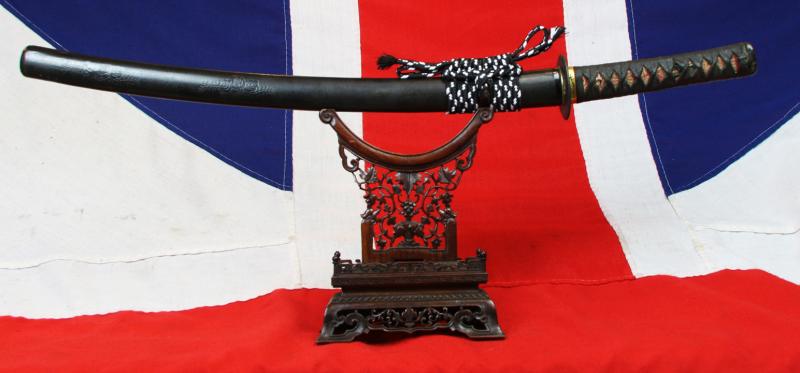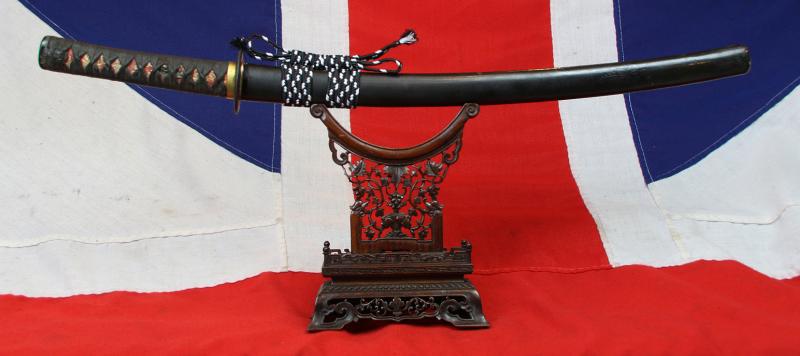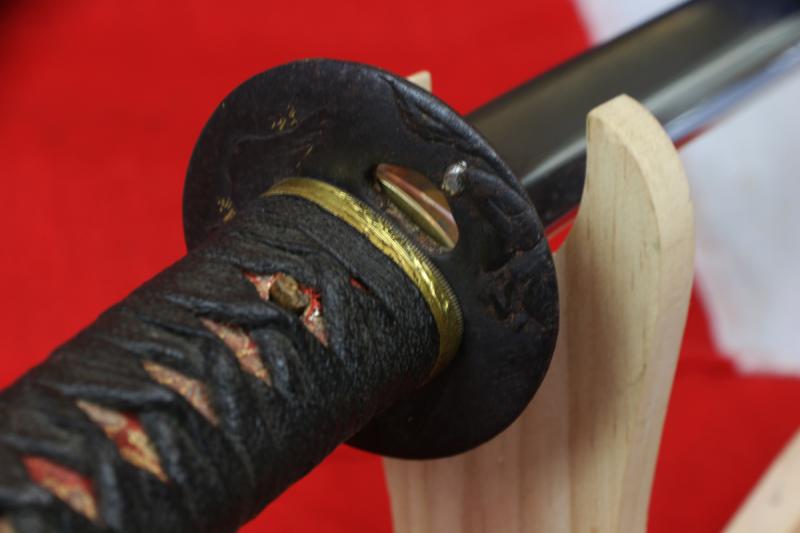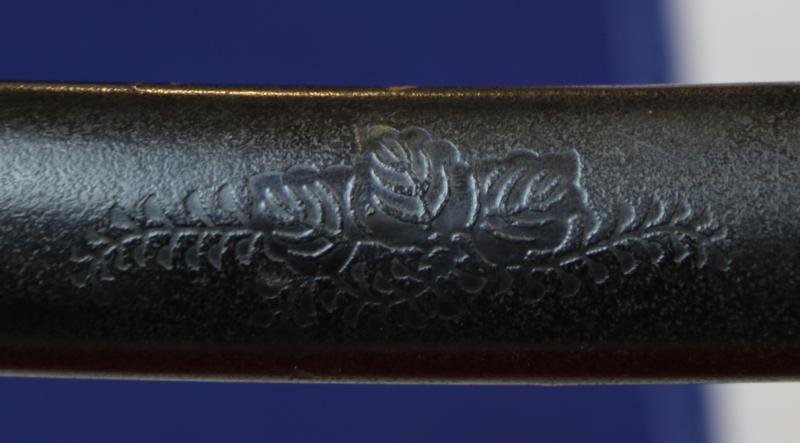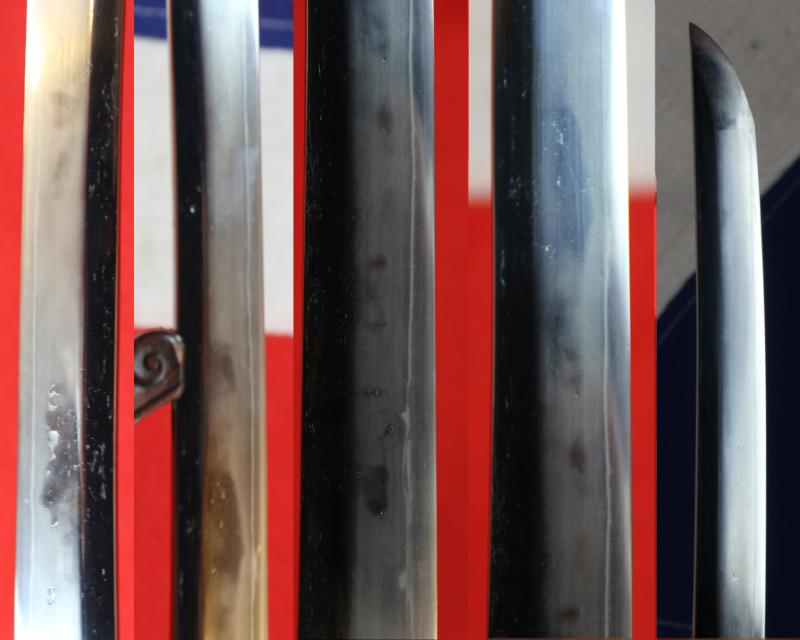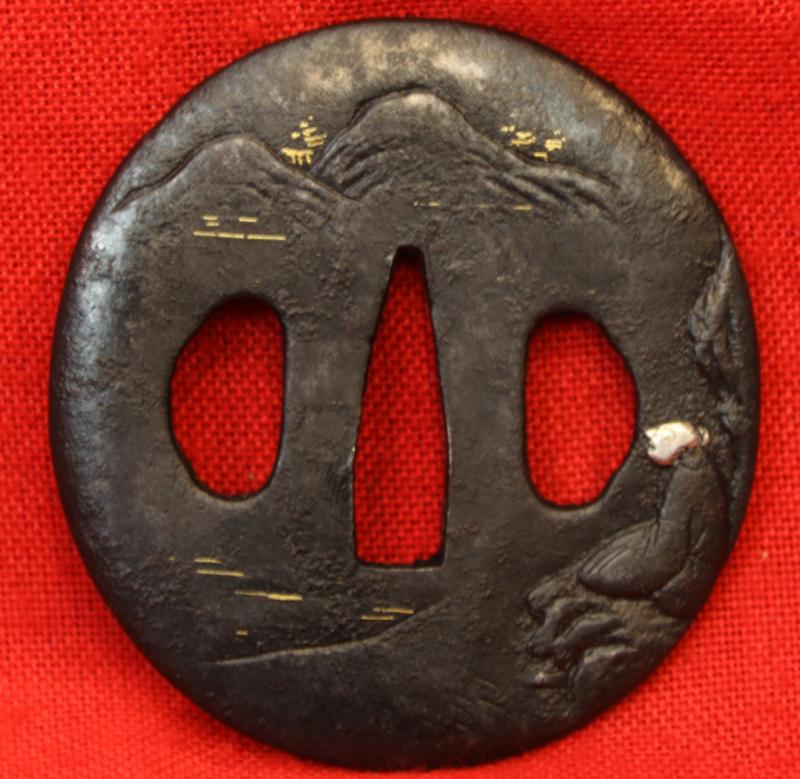A Koto Period Signed Kiyomitsu Chisa Katana With Original Edo Period Mounts & Saya With The Toyatomi Clan & Imperial Kiri Kamon
Circa 1500,
With original urushi lacquer saya in black featuring a design of the Kiri mon. A jolly nice, likely Koto period, iron, round tsuba, decorated with a seated silver figure, with gold, cloud and shimmering water highlights, and a background twin mountain scene. Carved buffalo horn kurigata and kashira, gold fuchi engraving decorated. A pair of nice menuki over patterned silk and strong tsuka-Ito.
Kaga (Kashu) Kiyomitsu: This line of swordsmiths was active for multiple generations, with different smiths known as "Kiyomitsu" existing in various provinces like Bizen, Mino, and Kaga.
Providence: Swords signed by Kiyomitsu were sometimes used by historical figures, such as the legendary Shinsengumi swordsman Okita Soji, though this is a point of debate among experts
The Kiyomitsu line was quite prosperous during the multiple wars of the Muromachi period. Since there were many smiths using this mei, it is very hard to assign a work without a personal name to a certain specific generation.
Hawley likely lists this swords potential smith to be active 1467-1510 and mixes in information for Kiyomitsu Shodai, i.e. being a son of Yukumitsu. This records fills the generation gap between Kiyomitsu Shodai and Nidai. It appears to be either Hawley's mistake or he possessed other information about some Kiyomitsu who was active between 1st and 2nd generations.
This early sword is perfect for the antique historical admirer of samurai warfare and history, the blade has signs of wear from the past five centuries, yet it is still a beautiful sword, thus it is absolutely perfect for the ancient historical samurai warfare collector, rather than those dedicated to seeking simply blade perfection.
The chisa katana was able to be used with one or two hands like a katana (with a small gap in between the hands) and especially made for double sword combat a sword in each hand. It was the weapon of preference worn by the personal Samurai guard of a Daimyo Samurai war lord clan chief, as very often the Daimyo would be often likely within his castle than without. The chisa katana sword was far more effective as a defence against any threat to the Daimyo's life by assassins or the so-called Ninja when hand to hand sword combat was within the castle structure, due to the restrictions of their uniform low ceiling height. But in trained hands this sword would have been a formidable weapon in close combat conditions, when the assassins were at their most dangerous. The hilt was usually around ten to eleven inches in length, but could be from eight inches or up to twelve inches depending on the Samurai's preference. Chisa katana, Chiisagatana or literally "short katana", are shoto mounted as katana. It is fair to say wakizashi are shoto which are mounted in a similar way to katana, but in this instance we are considering the predecessors of the daisho. In the transitional period from tachi to katana, katana were called "uchigatana", and shoto were referred to as "koshigatana" and "chiisagatana", in many cases quite longer than the later more normal length wakizashi.
Code: 25946
2450.00 GBP

